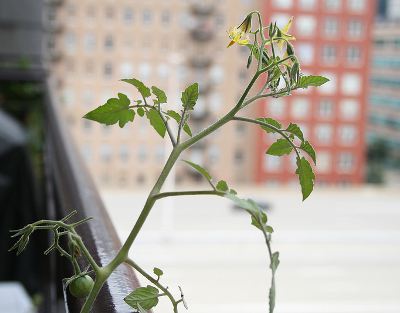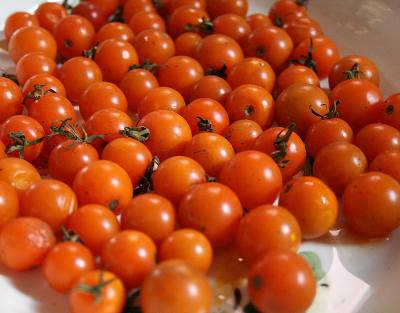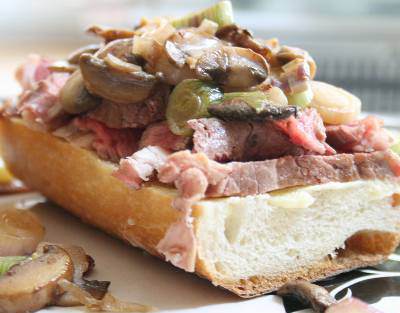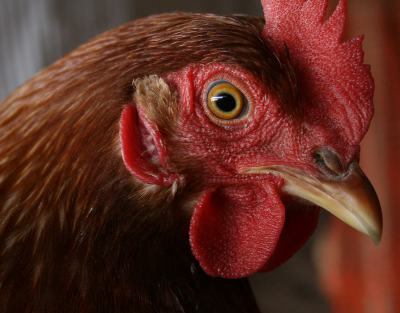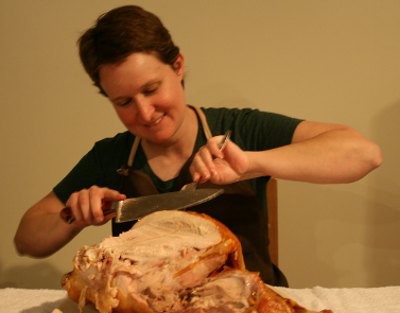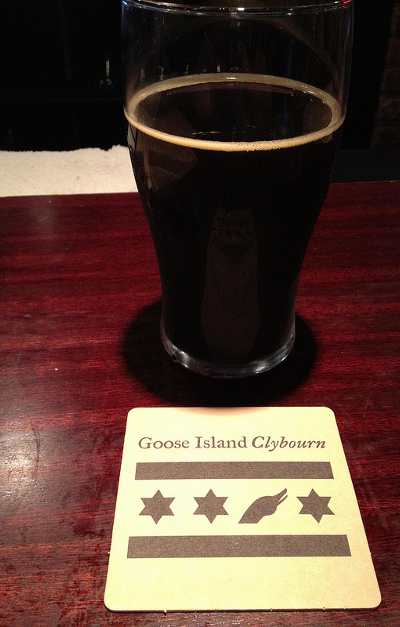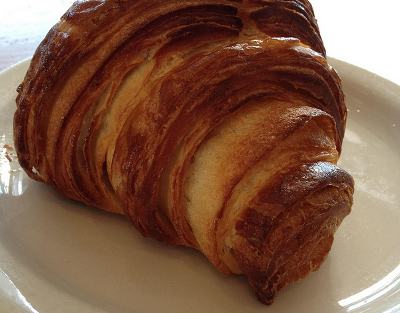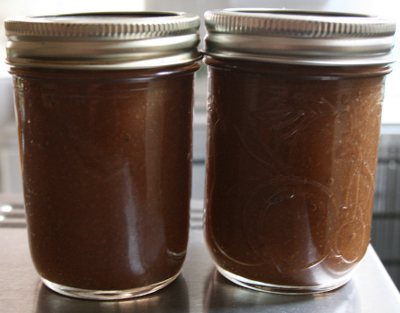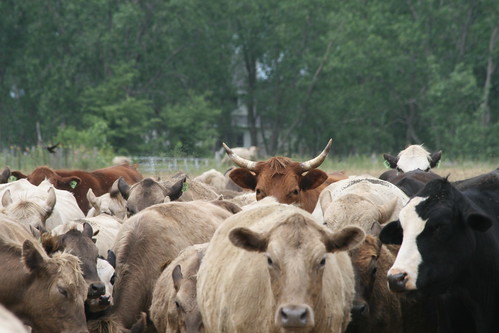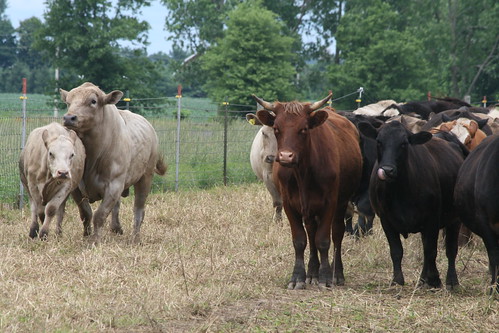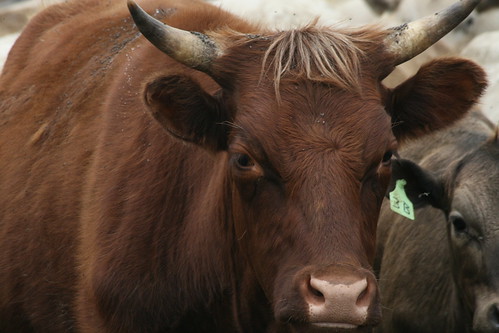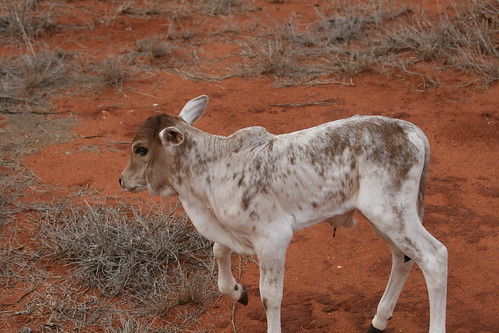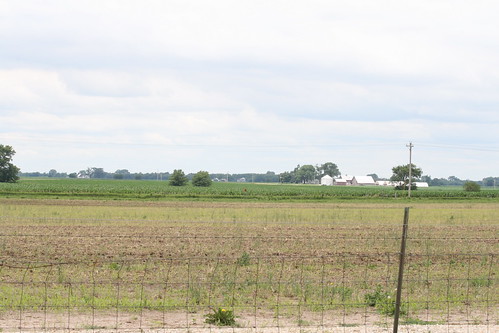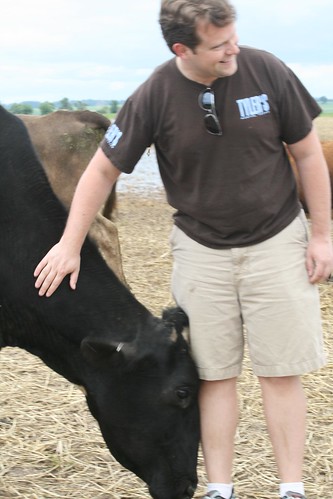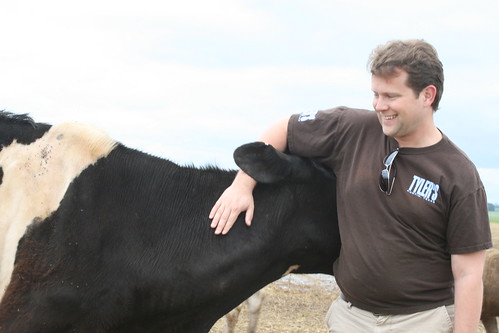“In the previous post”:http://metacookbook.com/archives/253-Meadow-Haven-Farm-Visit.html I posted about why I was visiting “the farm”:http://www.meadowhavenfarm.com/index.html (to pick up a butchered hog) & the chickens on the farm. This was going to be a post about the hogs & the cows, but it turns out I took a lot of cow photos.
Cows! The cows were pretty neat, especially given their relative lack of aggression. Cows in the New Mexico bosque are total jerks, in case you didn’t know. I mentioned this (maybe in slightly politer terms) to Jeremy. He told me the trick to cows is to be confident and make sure they believe it.
I’m just going to say, that’s pretty hard to do when you have no experience with cows and you suddenly find yourself the star of a Looney Tunes short. You know the ones: the bull is snorting, pawing the ground, and slowly lowering his head? Yeah. Bulls (more likely steers, I bet) in the New Mexico bosque are quite willing to do that…
The cows at Meadow Haven, thankfully, were merely suspicious of us. They weren’t contemplating full revolution.
Okay, these cows weren’t even terribly suspicious. Most of ’em just wanted to snuffle around.
(I took a lot of cow photos. Just fair warning.)
I did a little bit of a double take here. Something definitely seemed out of place. I couldn’t quite put my finger on it until…
I imagine the roan guy is wondering what the two jokers on his right are up to. Really, I wonder what they’re all thinking, but he just looks so funny.
This one was very interested in investigating us. I think it’s because we were near the water basin, but I’m not actually sure. It might have been because we were hanging out with her friend, Jeremy.
I had to snap (and share) this one because baby anything = cute.
Finally, what might be my favorite cow photo of the day. (Or, really, that I’ve ever taken.)
I love this photo. He’s very pretty. Also, though, you can see the life of a cow involves flies & dirt.
I have to be honest with you guys, I spent a lot of time looking at these cows & thinking about the cows I saw in Kenya. The comparisons were inevitable, I think.
It’s funny, I read “The Pioneer Woman’s blog”:http://thepioneerwoman.com/ every day, and she posts a LOT of photos of cattle. Big, monstrous cattle. Her kids working cattle, her husband & in-laws working cattle. None of it has ever made me consider my Kenyan experiences with cattle.
It’s not because Meadow Haven’s cattle look more like Kenyan cattle, though I think they do in coloration. PW’s family cattle seem “much more uniform looking”:http://thepioneerwoman.com/blog/2011/01/herding-the-herefords/ than either Meadow Haven’s cattle or Kenyan cattle, though I’m not entirely sure if it’s accurate. And it’s not that Meadow Haven’s cattle look unhealthy compared to PW’s cattle, because they don’t. Kenyan cattle sure do.
FOR THOSE OF YOU JUST SCROLLING THROUGH MY BLATHER & LOOKING AT PRETTY PHOTOS OF FARM ANIMALS, THE FOLLOWING THREE PHOTOS WERE NOT TAKEN AT MEADOW HAVEN. THESE COWS ARE FROM MY TRIP TO KENYA IN 2009.
I think it’s just that I’ve never seen PW’s cattle in person, but I’ve been near Kenyan cattle twice in my life & now very up close & personal with Meadow Haven’s (you’ll see just how up close in a second). Effectively, PW’s cattle are her livelihood, but are just this side of imaginary to me.
Looking at Meadow Haven’s cattle, my mind had “This is what cattle should look like” on repeat. Over and over I thought this, while images of Kenyan cattle rattled through my brain. Almost every cow I saw in Kenya was a bag of bones, which is sad for so many reasons. About the only one who wasn’t was this little guy here & I wonder how long it took for that to change.
Actually, I think I kept thinking of Kenyan cattle in part due to the setting. Meadow Haven doesn’t, in general, look anything like the semi-arid parts of Kenya I’ve been to, but the area the cattle were in really rang a bell for me. As you can see in the photos, there’s not a lot of green grass where they are. There’s rarely much grass at all where I’ve seen Kenyan cattle either.
This turns out to be an abject lesson in what a herd of cattle are capable of eating. Jeremy told us the cattle had been on that pasture a week, and when they’d put them on it the grass had been as high as his hip. Now it looks a bit like a field of dry hay. It really drove home some of the things I “knew” about overgrazing, soil erosion, and other issues with much of the Kenyan cattle.
Though, note please that this is during an epic drought this area of Kenya was in. So, some of this overgrazing issue and the dry, brown of the are is amplified by that drought.
The folks at Meadow Haven, however, are taking big steps to prevent overgrazing & soil erosion.
The foreground is a pasture the cattle had recently grazed & has been reseeded. I don’t recall what Jeremy said the background is. Sorry about that!
Anyway, this all tells me there’s investment in cattle & soil quality here, and that there’s a lot of grazing the cattle can do. I know that Meadow Haven has their cows on a 100% grass diet (no grain finish), so I am guessing this means extra juggling to make sure the cattle are getting the grass they need year round without overgrazing. I don’t know how much extra vs other farmers/ranchers who grain finish (or send their animals to concentrated animal feeding operations for finishing).
Sadly, “overgrazing” is exactly the issue I saw over & over in Kenya, and that’s why the mud/no grass association was so strong in my head. I won’t get into it much, because this isn’t about Kenyan cattle, but I do want to mention overgrazing and over-browsing1 are huge concerns there. There’s a lot of cattle in the areas of Kenya I’ve spent the most time in, as well as many wild critters that use the same resources. And, frankly, the wild critters are better at it. But there’s a lot of cattle. And cattle mean a lot to many people there, so owning more cattle is always the correct answer for those people. So cattle often out-compete the native critters2.
Okay! I said I wouldn’t talk about it much, and it’s a bummer of a topic. So, how close did we get to the Meadow Haven cattle?
About this close. Just to Phyllis here, but we were nearly this close to several of them. And in taking these photos, I showed just what a city girl I am. I nearly backed into a steer as I backed up to get a better shot. Go me!
Anyway, this is Dylan & Phyllis. Phyllis is much braver than the other cows, and she was more than happy to come say hello & demand scritches. I guess she is a retired dairy cow, so she’s more used to people than every other cow there. Jeremy showed us her favorite places to get scratched. As he pointed out, they correlate about 1:1 to “places she can’t reach”. He also said it’s impossible to scratch a cow too hard, as they have very thick hide.
As you can see in the third picture, she’s pretty demanding. Dylan stopped scratching her, but she didn’t really feel like that was the right answer. So she insisted he start it up again.
I liked Phyllis.
fn1. In Kenya I learned that cattle, though grazers, can survive on an almost all-browse diet. It’s very bad for them, and horrible for the environment they’re in, but it’s doable. When a person’s wealth & personal survival are completely tied into the survival of their cattle, sometimes the only right answer for them is a tough one such as that.
fn2. Not that Americans, as a whole, have a lot of room to talk. I live in the middle of The Great Plains, and the last bison I saw was on a ranch in New Mexico. I’ve never seen an Illinois bison.
